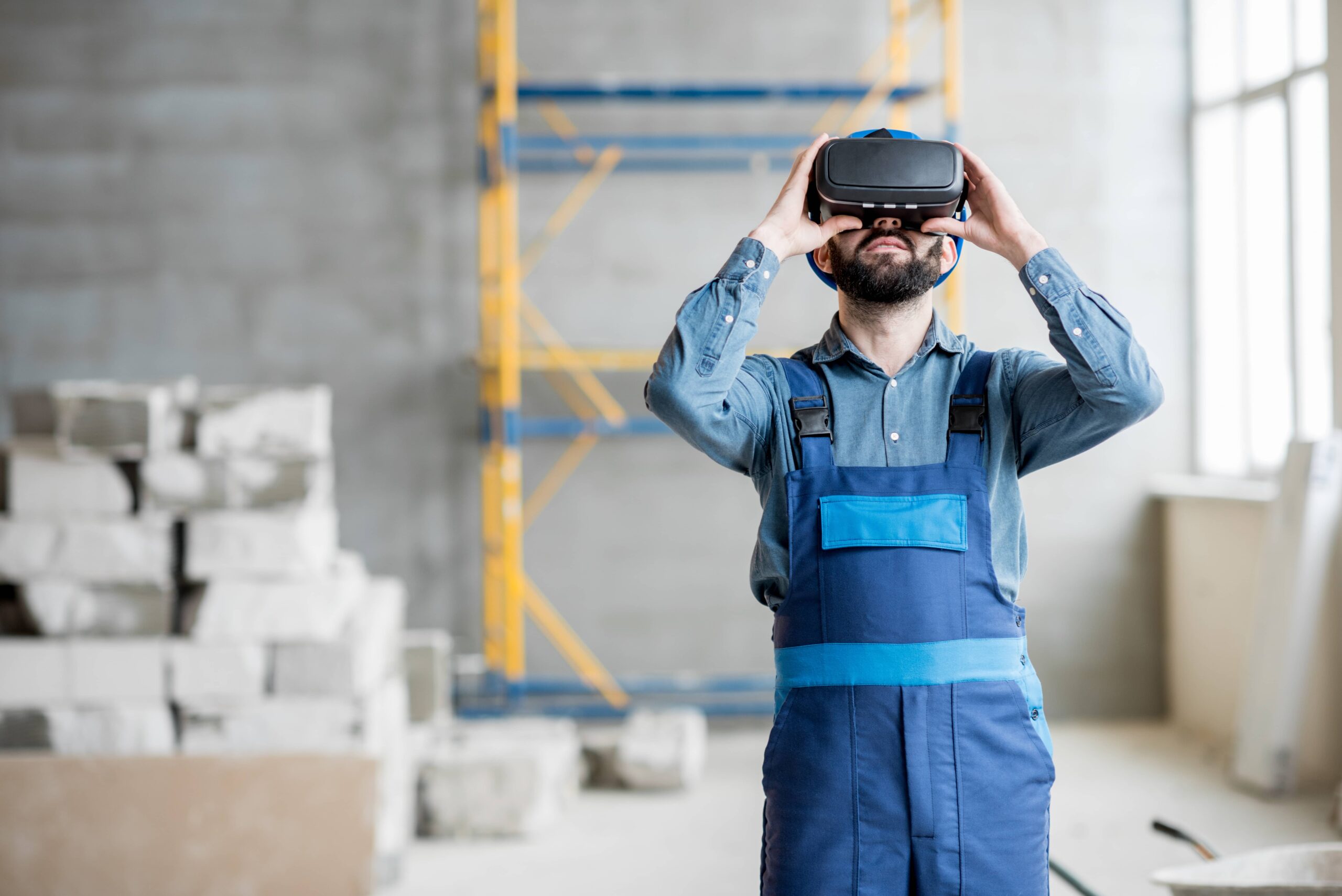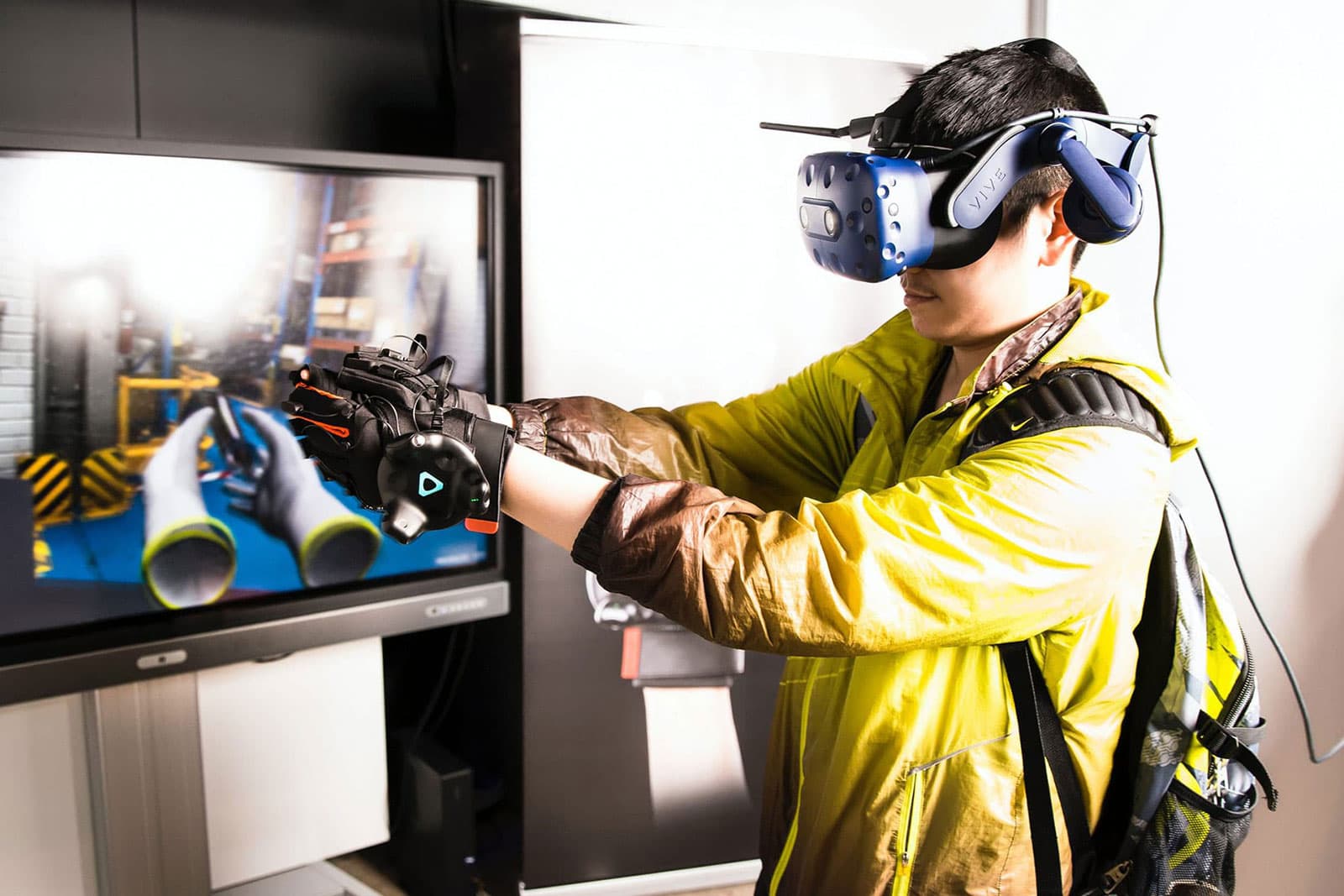However, it faces major challenges, particularly in terms of safety on construction sites and worker training. The construction industry is one of the sectors most affected by accidents at work, and it is therefore crucial to put in place effective training systems to prevent these risks. Virtual reality (VR), a fast-growing technology, could well be the answer to these challenges, revolutionising the way workers are trained and prepared to work on construction sites. This development also raises important questions about how VR could be used to raise the status of manual trades and transform training methods in the construction sector.
In this context, VR is emerging as a powerful tool for improving safety, technical skills and the cost-effectiveness of training in the construction sector. This article explores in depth the impact of virtual reality on construction training, its current applications, and the challenges and opportunities it creates.
The building and public works sector and the need for training reforms
The construction industry is one of the most accident-prone sectors, with an average of 56 accidents per 1,000 employees, well above the average for other economic sectors. The causes of these accidents are manifold: neglect of safety rules, lack of practical training and insufficient awareness of the specific risks of building sites. Working conditions in this sector are often harsh, and dangerous situations are omnipresent. According to data from the CNAM (Caisse Nationale d'Assurance Maladie), construction workers are particularly exposed to the risks of falls, accidents related to the use of machinery, injuries from sharp objects, as well as the risks of electrocution and poisoning.
.png?width=1200&length=1200&name=Design%20sans%20titre%20(6).png)
The training of construction workers and technicians is therefore essential to prevent accidents and ensure safe construction sites. However, traditional training is often based on theoretical support, which excludes the practical aspect necessary for effective understanding and application of safety instructions. In addition, face-to-face training often requires significant equipment and resources, which can make it difficult to access, particularly for small companies or for seasonal and temporary workers.
It is in this context that virtual reality (VR) is becoming an indispensable tool, offering innovative solutions for training workers by immersing them in simulated site environments. This makes it possible to reproduce real-life situations without exposing workers to physical risks, while allowing them to practise their professional gestures in a safe environment.
Why is Virtual Reality the ideal solution for training in the construction industry?
VR has the potential to radically transform the way construction workers are trained. It offers total immersion, allowing learners to familiarise themselves with real working environments, to understand and experience dangerous situations, while being protected from the risks. Unlike traditional training, which is often based on demonstrations or abstract theories, VR provides direct practical experience.
Total, safe immersion
The strength of VR lies in its ability to offer complete immersion. Using VR headsets and appropriate software, learners can be immersed in extremely realistic site environments. This immersion makes it possible to reproduce real-life situations where safety is paramount, without exposing participants to physical dangers. For example, learners may find themselves working at height, handling heavy tools or managing materials on a site in extreme conditions, all in a totally safe environment.
Rehearsing and mastering technical skills
The very nature of VR means that exercises can be repeated as many times as necessary. This allows learners to master specific technical gestures without worrying about fatigue or the physical risks associated with traditional practical training. For example, in the construction industry, it is essential to master the movements involved in laying bricks, using a drill or driving a construction machine. By practising these actions in a VR environment, workers acquire the necessary skills before putting them into practice on a real worksite. They also receive instant feedback on their postures. This safe repetition allows them to develop appropriate reflexes, reducing the risk of injury on the real site.
.jpeg?width=1200&length=1200&name=image%20(5).jpeg)
Risk prevention: a major advantage of the RV
The risks on building and public works sites are many and varied: falls from heights, accidents related to the use of machinery, injuries caused by tools, fires, etc. These dangers are often poorly perceived by workers or poorly anticipated, leading to serious accidents. According to a CNAM study, the most frequent risks are falls (28%), accidents involving the use of machinery (23%), and accidents involving materials or tools (14%). By offering an immersive experience where workers can come face to face with these hazards in complete safety, VR makes it possible to raise awareness more effectively than traditional training.
Companies specialising in VR training, such as MIMBUS, offer immersive solutions like MIMBUS Construct that enable workers to identify the hazards present on construction sites and learn good safety practices. These simulations can reproduce situations such as falling objects, electrical hazards or accidents involving heavy machinery. They enable learners to identify risks and practise reacting correctly, taking the appropriate safety measures.
Emergency management
One of the major advantages of VR in training construction workers is the ability to simulate emergency situations. These simulations are particularly useful in scenarios where every second counts, such as in the event of a fire or serious injury. Workers can practise using the appropriate safety equipment, such as fire extinguishers or protective devices, and adopting crisis management behaviours. This enables them to remain calm and react professionally to stressful situations, an essential aspect of workplace safety.
Reduced training costs
Another major advantage of VR is the reduction in training costs. VR makes it possible to centralise all the necessary teaching resources on a single platform, reducing the need for real equipment, training venues and trainers. Companies can therefore train more workers at lower cost, while guaranteeing high-quality training.
.jpeg?width=1200&length=1200&name=image%20(4).jpeg)
Learn a trade in the construction industry using VR
The building and civil engineering professions are highly diverse and cover a wide range of specialities. Each trade presents its own unique challenges, from driving machinery to masonry work, from working at height to handling heavy materials. VR offers future workers an opportunity to acquire practical skills in a safe, immersive environment.
Immersion in specific work environments
Thanks to simulations specific to each profession, learners can familiarise themselves with different working environments. For example, a learner trained in bricklaying can practise laying bricks and working at height, while a learner in machine operation can find himself driving a crane or bulldozer in a virtual environment. These specific training courses enable workers to acquire specific skills, without the risk of material damage or physical injury.
Optimising training and recruitment in the construction industry
VR training is not just about preparing workers. It also plays a key role in the recruitment process and in optimising human resources within construction companies. VR makes it possible to quickly train new arrivals, including temporary and seasonal workers, and get them up and running more quickly.
Improved recruitment thanks to VR
In addition to training, VR can be used to test candidates' skills before they are even hired. Companies can offer immersive simulations to test applicants' technical skills, particularly in difficult or complex situations. For example, simulating working at height or working on a site in extreme weather conditions can be used to check the behaviour of applicants and their ability to react to risks.

VR and the promotion of manual trades
Manual jobs in the construction industry, as in other sectors, have long suffered from a devalued image. They are often perceived as less prestigious and less well-paid alternatives to intellectual occupations. This perception has led to a vocational crisis, with a lack of young people interested in these professions. Yet these jobs are essential to building and maintaining the infrastructure that is so vital to society.
VR as a tool for raising the profile of these professions
VR can help to change this perception by offering a modern, dynamic approach to training for manual trades. By using technology in innovative ways, VR transforms these trades into attractive occupations, suited to a generation of workers who are more connected and more interested in new technologies. It also makes it possible to preserve traditional skills by safeguarding them in a digital environment. For example, VR can record and reproduce complex craft gestures, enabling apprentices to learn them without the need for a master craftsman to be directly present.

Young people's commitment to the construction industry
Finally, incorporating VR into training courses could also encourage more young people to take up the building trades. By offering interactive and immersive training, VR captures the attention of the younger generation and gets them interested in manual trades that are often neglected. It shows that the construction industry, far from being a backward sector, can adapt to new technologies to offer training at the cutting edge of innovation.
Conclusion
Virtual reality is undoubtedly one of the most promising training tools for the construction industry. It provides a response to major challenges, particularly in terms of safety, risk prevention and upgrading workers' skills. By immersing workers in safe, realistic environments, VR prepares them for real-life situations, reducing the risk of accidents on building sites. What's more, VR offers an opportunity to raise the profile of manual trades, which are often devalued, and to make training in the construction industry more accessible, cost-effective and attractive. While virtual reality is not intended to replace on-the-job training, it is an ideal complement that will considerably improve the safety, skills and efficiency of construction workers in the years to come.



